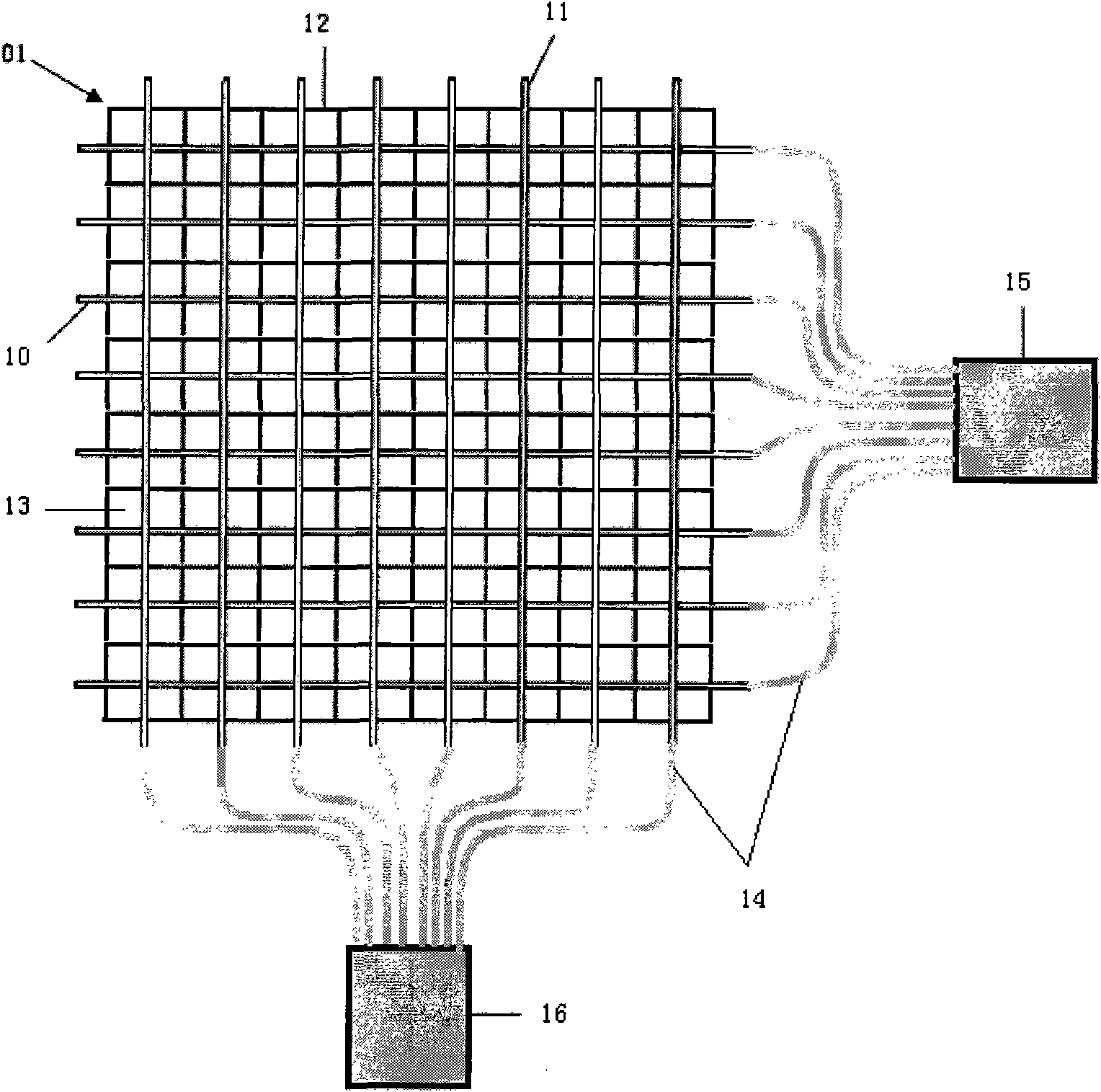Scintillation crystal array detecting device
A technology of scintillation crystal array and detection device, which is applied in measurement device, radiation measurement, X/γ/cosmic radiation measurement and other directions, can solve the problems of reducing photon collection efficiency, increasing the degree of noise influence, and failing to realize equal proportion distribution of light. , to achieve the effect of high transmission effect, balanced signal-to-noise ratio, and reduced volume and weight
- Summary
- Abstract
- Description
- Claims
- Application Information
AI Technical Summary
Problems solved by technology
Method used
Image
Examples
Embodiment 1
[0040] The crystal array in this embodiment is exposed to the gamma-ray environment generated by the nuclide drug injected into the subject, and the crystals in the crystal array generate fluorescent photons after receiving the gamma photons.
[0041] In this embodiment, a set of optical fiber system based on optical calculation is used to connect with the crystal array 01, such as figure 1 Shown is the plane structure diagram of the scintillation crystal array detection device, the optical fibers are distributed into M rows and N columns, so that each row of independent scintillation crystals 13 is connected to a row of optical fibers 10, and each column of independent scintillation crystals 13 is connected to a column Fiber 11. All row optical fibers 10 are all connected with the first position sensitive photomultiplier tube 15, all row optical fibers 11 are all connected with the second position sensitive photomultiplier tube 16, utilize the first position sensitive photomu...
Embodiment 2
[0051] As another embodiment of the present invention, the structure of the crystal array detection device in this embodiment is the same as that of Embodiment 1, and the NaI (Tl) scintillation crystal of the array is used in the single photon emission tomography imaging system (SPECT) (each volume 4×4×10mm 3 ), the crystal array 01 is exposed to the 140keV γ-ray environment generated by the nuclide drug injected into the subject. The NaI(Tl) crystal absorbs gamma photons 24 with an energy of 140 keV, and each keV of energy can generate about 40 fluorescent photons 26 with a wavelength range of 400 to 500 nm, and the spectral peak is at about 415 nm. Therefore, about 5600 fluorescent photons can be generated after each γ photon is absorbed by NaI(Tl)26. The decay time of the NaI crystal is 0.25 μs, and within 1 μs (about 4 times of the decay time of the NaI crystal) after the 140 keV gamma photon is absorbed, all the fluorescent photons 26 are radiated.
[0052] Figure 4 A...
PUM
 Login to View More
Login to View More Abstract
Description
Claims
Application Information
 Login to View More
Login to View More - R&D
- Intellectual Property
- Life Sciences
- Materials
- Tech Scout
- Unparalleled Data Quality
- Higher Quality Content
- 60% Fewer Hallucinations
Browse by: Latest US Patents, China's latest patents, Technical Efficacy Thesaurus, Application Domain, Technology Topic, Popular Technical Reports.
© 2025 PatSnap. All rights reserved.Legal|Privacy policy|Modern Slavery Act Transparency Statement|Sitemap|About US| Contact US: help@patsnap.com



